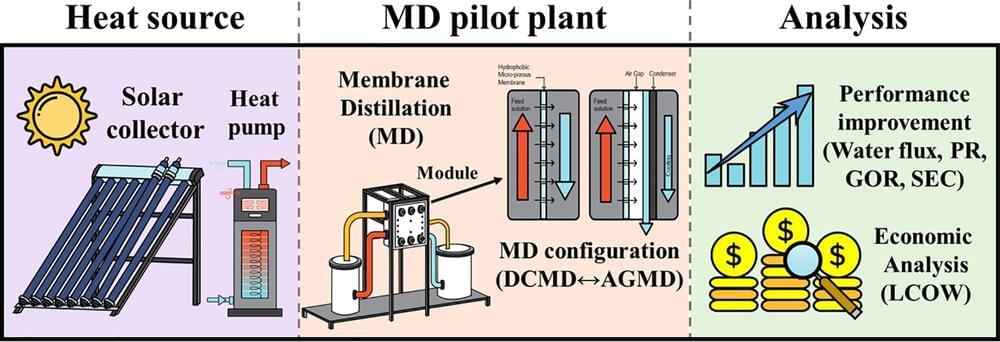Clean water is essential for human survival. However, less than 3% of fresh water can be used as drinking water. According to a report published by the World Meteorological Organization, there is scarcity of drinking water for approximately 1 billion people worldwide, which is expected to rise to 1.4 billion by 2050.
Seawater desalination technology, which produces fresh water from seawater, could solve the problem of water scarcity. At the Korea Institute of Science and Technology (KIST), a research team led by Dr. Kyung Guen Song from the Center for Water Cycle Research, have developed a hybrid membrane distillation module that combines solar energy with hydrothermal heat pumps to reduce thermal energy consumption during the desalination process. Their results are published in Energy Conversion and Management.
Reverse osmosis and evaporation methods are relatively common seawater desalination processes; however, these methods can operate only at high pressures and temperatures. In comparison, the membrane distillation method produces fresh water by utilizing the vapor pressure generated by the temperature difference between the flowing raw water and treated water separated by a membrane. This approach has the advantage of low energy consumption, as fresh water can be generated at pressures of 0.2–0.8 bar, which is lower than atmospheric pressure, and temperatures of 50–60℃. However, large scale operation requires more thermal energy. Thus, research studies are required to reduce the use of thermal energy for commercial operation.
